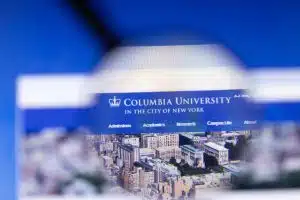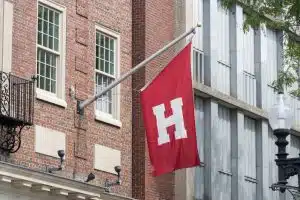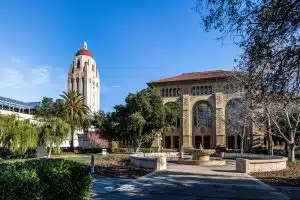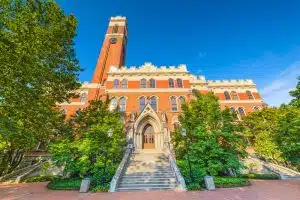Exploring the Ethnic Breakdown of Johns Hopkins University
Johns Hopkins University, commonly known to many as a prestigious institution that leads in the domains of research and healthcare, is located in the culturally diverse city of Baltimore, Maryland. However, have you ever stopped to consider the ethnic diversity within the university itself? This article dives deep into the ethnic breakdown of Johns Hopkins and underscores its significance in academia.
Understanding Ethnic Diversity at Johns Hopkins University
When we discuss ethnic breakdown at Johns Hopkins University, we are referring to the representation and inclusion of individuals from various ethnic backgrounds. These individuals bring with them unique cultures, histories, languages, and experiences, all of which contribute to the multifaceted ecosystem of the university.
Johns Hopkins University recognizes the importance of ethnic diversity in higher education and has taken significant steps to foster an inclusive environment that embraces and celebrates differences. By doing so, the university aims to create a comprehensive academic environment that benefits all students, faculty, and staff.
The Importance of Ethnic Diversity in Higher Education
Why does ethnic diversity matter in higher education? Firstly, it fosters a more comprehensive academic environment. The diversity of thoughts, experiences, and perspectives fostered by such inclusion offers rich insights, thereby enhancing academic discourse. When students from different ethnic backgrounds come together, they bring with them unique perspectives that challenge traditional ways of thinking and encourage critical analysis.
Aside from the intellectual benefits, ethnic diversity also prepares students for the global workplaces they will enter after graduation. In today’s interconnected world, professionals often interact with clients, colleagues, and counterparts from myriad backgrounds. By experiencing diversity firsthand during their time at Johns Hopkins, students develop the cultural competence and empathy necessary to navigate these diverse professional environments successfully.
Furthermore, ethnic diversity encourages empathy, compassion, and understanding, building a community that respects and celebrates differences. It creates an environment where individuals can learn from one another, challenge stereotypes, and develop a broader understanding of the world. This environment, in turn, fosters innovation and progress as individuals from different backgrounds collaborate and bring their unique perspectives to the table.
The Role of Johns Hopkins in Promoting Ethnic Diversity
Johns Hopkins University has long upheld its commitment to promoting diversity and inclusivity. The university recognizes that a diverse campus community enriches the educational experience for all students and prepares them for a globalized world.
One of the ways Johns Hopkins promotes ethnic diversity is through the Office of Multicultural Affairs. This office serves as a resource for students from underrepresented backgrounds, providing support, advocacy, and programming to ensure their success. The Office of Multicultural Affairs also organizes events and initiatives that celebrate diversity and raise awareness about the importance of inclusivity.
In addition to the Office of Multicultural Affairs, Johns Hopkins has a Diversity Leadership Council that works to develop and implement strategies to enhance diversity and inclusion across all aspects of the university. This council brings together faculty, staff, and students to collaborate on initiatives that promote diversity and foster an inclusive campus community.
Furthermore, Johns Hopkins offers a range of diversity-oriented undergraduate and graduate programs. These programs provide students with opportunities to explore and engage with different cultures, histories, and perspectives. By participating in these programs, students gain a deeper understanding of ethnic diversity and develop the skills necessary to navigate diverse environments effectively.
In conclusion, Johns Hopkins University is committed to promoting ethnic diversity and creating an inclusive campus environment, as shown in their ethnic breakdown. The university recognizes the importance of diversity in higher education and strives to provide students with the resources, support, and opportunities they need to thrive academically and personally. Through its various initiatives, Johns Hopkins aims to foster an environment that respects and celebrates differences, preparing students to become global citizens and leaders in their respective fields.
A Closer Look at the Ethnic Breakdown of Johns Hopkins
Examining the raw statistics of Johns Hopkins’ student body can provide enlightening insights into its ethnic makeup. However, understanding the diverse backgrounds and experiences of the students can offer a more comprehensive understanding of the university’s rich cultural tapestry.
At Johns Hopkins, the ethnic composition of the student body is a reflection of the university’s commitment to diversity and inclusivity. The university recognizes the importance of fostering an environment where students from all walks of life can thrive and contribute to the vibrant academic community.
Breakdown of Domestic Students’ Ethnicities
Of the domestic students, the largest representation comes from White students, who bring their unique perspectives and experiences to the campus. Their presence contributes to a diverse range of ideas and enriches the academic discourse at Johns Hopkins.
In addition to the White student population, there is a significant proportion of students identifying as East Asian. These students, hailing from countries such as China, Japan, and South Korea, bring with them a rich cultural heritage and a strong work ethic that adds to the academic rigor of the university.
Furthermore, Hispanic students form a substantial group within the university. Their diverse backgrounds, including various Latin American countries, contribute to the cultural mosaic of Johns Hopkins. The university values the unique perspectives and experiences that Hispanic students bring to the table.
Black students also make up a significant portion of the student body at Johns Hopkins. Their presence is a testament to the university’s commitment to inclusivity and providing equal opportunities for students from all backgrounds.
Additionally, there is a notable representation of students belonging to two or more races. These students embody the intersectionality of identities and contribute to the diverse fabric of the university community.
It is important to note that while the representation from other ethnic groups, such as American Indian or Alaska Native students, Native Hawaiian or Other Pacific Islander students, may be comparatively smaller, their presence is undoubtedly significant in enhancing the university’s diversity. The university recognizes the importance of creating an inclusive environment that celebrates and supports students from these communities.
International Students and Their Ethnic Backgrounds
Johns Hopkins boasts a vibrant community of international students who bring a global perspective to the university. These students come from countries across the world, enriching the campus with their diverse ethnic backgrounds and cultural traditions.
Predominantly, international students at Johns Hopkins come from countries in Asia, particularly South Korea, China, and India. Their presence not only enhances the cultural diversity of the university but also fosters cross-cultural understanding and collaboration among students.
In addition to Asian countries, there is also notable representation from European countries and regions like the Middle East and Africa. These students contribute to the global diversity of the university, bringing with them a wealth of knowledge and experiences from their respective regions.
The international student community at Johns Hopkins plays a vital role in promoting cultural exchange and fostering a global perspective among all students. Their presence on campus creates an inclusive environment where students can learn from one another and develop a deeper appreciation for different cultures and perspectives.
In conclusion, the ethnic composition of Johns Hopkins’ student body is a testament to the university’s commitment to diversity and inclusivity. The presence of students from various ethnic backgrounds enriches the academic experience and fosters a vibrant community where different cultures and perspectives can thrive.
The Impact of Ethnic Diversity on Campus Life
The ethnic diversity at Johns Hopkins does not only statistically enliven the university but also tangibly impacts campus life.
Johns Hopkins University takes pride in its commitment to fostering an inclusive and diverse community. The presence of students from various ethnic backgrounds creates a vibrant and dynamic campus environment that is rich in cultural exchange and intellectual growth.
How Ethnic Diversity Enhances the Learning Environment
Within classrooms, the discussions are enriched by myriad perspectives offered by students from different ethnic backgrounds. This diversity of thought not only enhances critical thinking but also fosters creativity and promotes problem-solving skills.
Imagine a biology class where students from different ethnic backgrounds share their unique cultural practices related to medicinal plants. This exchange of knowledge not only broadens the understanding of different healing traditions but also encourages students to think outside the box when it comes to scientific research and innovation.
Additionally, having a diverse set of faculty members adds to the robust academic environment, as they bring unique techniques and worldly insights into the classroom. A professor who has firsthand experience of working in a different country can provide valuable insights into the cultural nuances that shape various industries, thus preparing students to thrive in a globalized world.
The Influence of Ethnic Diversity on Social Interactions
A diverse campus also impacts the social interactions at Johns Hopkins. It paves the way for cultural exchange, intercultural understanding, and relationships that extend beyond the duration of one’s academic life.
Imagine walking through the campus and hearing a group of students engaging in a lively discussion about the impact of cultural heritage on music. This exchange of ideas not only fosters a sense of curiosity and open-mindedness but also promotes empathy and respect for different perspectives.
Many university events like international festivals, cultural performances, and ethnic cuisine nights celebrate this diversity and foster a sense of community among students of varied ethnic backgrounds. These events provide an opportunity for students to showcase their cultural heritage, share their traditions, and learn from one another. It is through these interactions that lifelong friendships are formed, creating a supportive network that extends far beyond the confines of the university.
Moreover, the presence of ethnic diversity on campus encourages students to step out of their comfort zones and engage with individuals from different backgrounds. This not only broadens their worldview but also prepares them to navigate diverse work environments and contribute to a more inclusive society.
Johns Hopkins University’s Efforts to Increase Ethnic Diversity
The need for increased ethnic diversity at Johns Hopkins University is a recognized priority for the institution. In order to foster a more inclusive and representative community, the university has implemented various initiatives and programs.
Admissions Policies and Ethnic Diversity
The admissions department at Johns Hopkins University has been actively working to ensure more ethnically diverse applicant pools over the years. In addition to evaluating academic achievements and extracurricular involvement, the university takes into consideration the unique experiences and perspectives that students from different ethnic backgrounds can bring to the campus community.
One of the key policies that has been instrumental in attracting students from varying ethnic backgrounds is the need-blind admissions process. This means that a student’s financial status does not impact their admission decision. By removing financial barriers, Johns Hopkins University aims to create equal opportunities for all students, regardless of their economic background.
Furthermore, the university actively engages with high schools and community organizations to reach out to students from underrepresented ethnic groups. Through targeted recruitment efforts, Johns Hopkins University strives to ensure that talented students from diverse backgrounds are aware of the opportunities available to them and are encouraged to apply.
Scholarships and Financial Aid for Minority Students
Recognizing the financial challenges that many minority students face, Johns Hopkins University offers several scholarships and financial aid programs aimed at supporting their educational journey. These initiatives are designed to ease the financial pressure and encourage the enrollment of students from underrepresented ethnic groups.
One such program is the Diversity Leadership Scholarship, which provides financial assistance to students who have demonstrated leadership potential and a commitment to promoting diversity and inclusion. This scholarship not only helps students finance their education but also recognizes and celebrates their contributions to the campus community.
In addition to scholarships, the university offers comprehensive financial aid packages that take into account a student’s individual circumstances. This includes grants, work-study opportunities, and low-interest loans. Through these initiatives, Johns Hopkins University aims to ensure that financial constraints do not hinder talented students from pursuing their academic goals.
Moreover, the university actively supports student organizations and initiatives that promote diversity and inclusivity on campus. These groups provide a platform for students from different ethnic backgrounds to come together, share their experiences, and celebrate their cultural heritage. By fostering a sense of belonging and community, Johns Hopkins University strives to create an environment where all students can thrive academically and personally.
In conclusion, Johns Hopkins University is committed to increasing ethnic diversity within its student body as shown in their ethnic breakdown. Through a combination of admissions policies, scholarships, and financial aid programs, the university aims to attract and support students from underrepresented ethnic groups. By creating a more inclusive and representative community, Johns Hopkins University believes that it can better prepare its students to thrive in an increasingly diverse and interconnected world.
Challenges and Opportunities in Enhancing Ethnic Diversity
While there have been strides in achieving ethnic diversity, Johns Hopkins faces challenges as well as opportunities in this regard.
Addressing Underrepresentation of Certain Ethnic Groups
Certain ethnic groups remain underrepresented within the university. Tackling this issue necessitates robust strategies such as targeted recruitment, mentorship programs, and strengthening retention rates among these ethnic groups. There’s also a need for a concerted effort in creating an even more inclusive and accepting campus climate.
Future Prospects for Ethnic Diversity at Johns Hopkins University
The commitment and efforts of Johns Hopkins in promoting ethnic diversity are commendable, but the journey doesn’t end here. The university has immense opportunities to enhance its diversity further, and it is taking steady steps towards becoming a global exemplar of ethnic diversity in higher education.
The individual and collective benefits of ethnic diversity are undeniable. With continuous efforts, Johns Hopkins is set to cultivate an environment where every student, regardless of their ethnic background, feels respected, valued, and has equal opportunities for growth.
In a world increasingly interconnected, we need to celebrate such institutions that work towards embracing diversity in all its hues, shaping the leaders of tomorrow to engage constructively with the multicultural world awaiting them beyond the classroom doors.








































